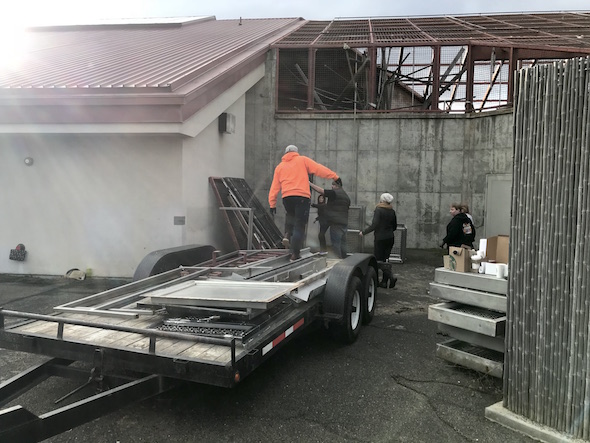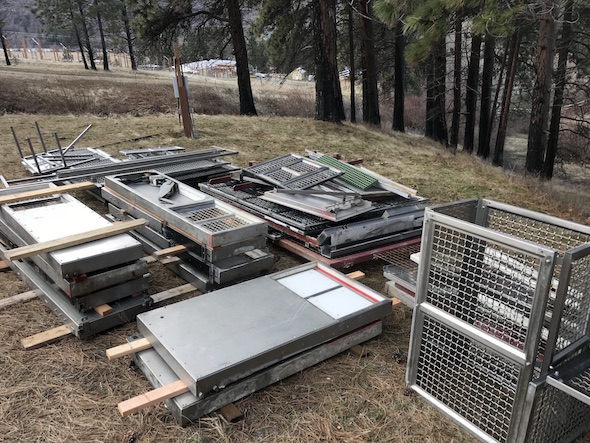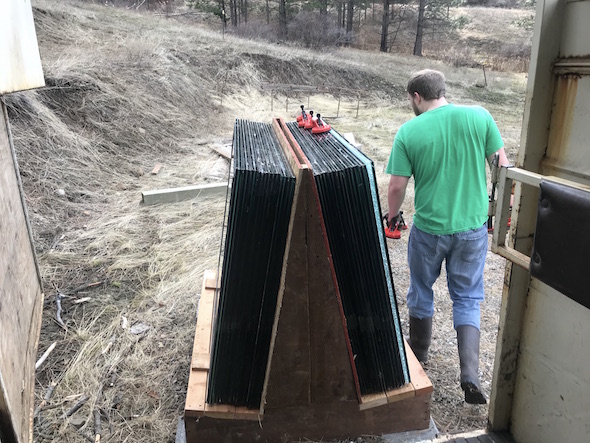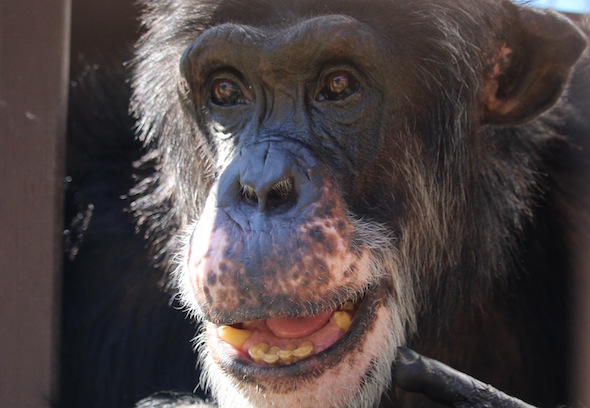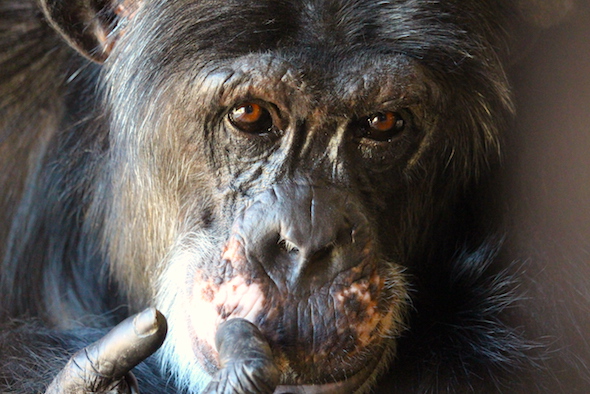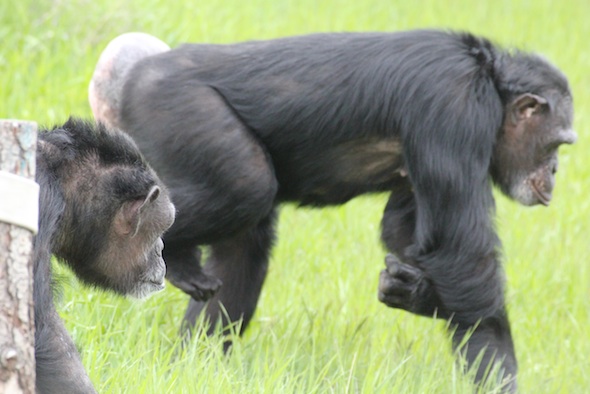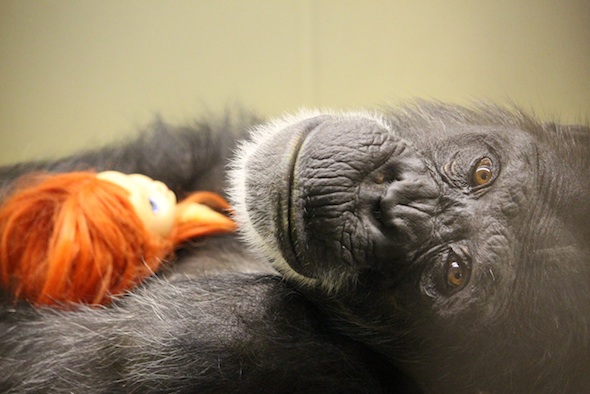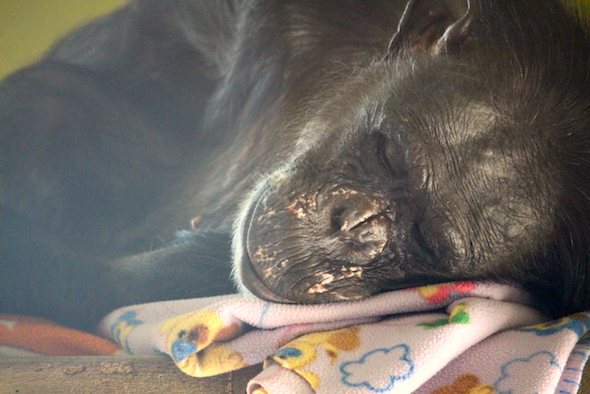Lately, Missy and Annie have been doing what they do best – playing all day!
Meanwhile, the humans have been busting their butts to move caging, glass, and other material from the former Chimpanzee and Human Communication Institute (CHCI) at Central Washington University before its demolition.
The building had sat largely empty in the years since Tatu, Loulis, and many of the staff and students associated with Friends of Washoe moved from campus to the Fauna Foundation in Canada. When the university determined that the building would be torn down to accommodate construction of a new dorm, they agreed to remove as much reusable material as possible and donate it to CSNW for use in our upcoming expansion. (Click here for a video from local news channel KAPP about the donation). But a jump in the timeline for the building’s demolition meant we had to get the material out with little notice. Thankfully, an emergency call to our local supporters on Facebook was met with an enthusiastic response, and just days later we had trucks, trailers, and lots of manual labor lined up and ready to help. In only a few hours, we loaded thousands of pounds of caging, steel doors, and 270-lb chimp-proof windows…
…and then unloaded it all at the sanctuary.
Alan, an CSNW intern, made the mistake of volunteering on the day that we needed to manually unload the nearly 4,500-lb of glass from the trailer. He is young, however, and likely had the use of his arms the next day, unlike some of us.
Our expansion project has been full of frustrating setbacks throughout the permitting process – lately around the location and design of a new driveway we are required to put in – but we are getting closer! And when we do break ground, we will do so knowing that we will be putting this material to good use and saving thousands of dollars in the process. It is a small but significant part of CHCI’s legacy, and a great way to remember and honor the chimpanzees that taught us so much.
